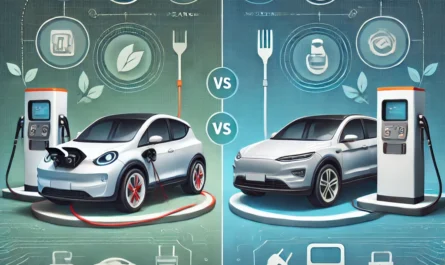Choosing the best car model can be both exciting and overwhelming. With countless options available, it’s essential to find a vehicle that suits your lifestyle, needs, and budget. Whether you’re buying your first car, upgrading to a family vehicle, or looking for something more fuel-efficient, careful planning is crucial to make a smart, cost-effective choice.
In this guide, we’ll walk you through the factors to consider when choosing the best car model for your lifestyle and budget. From evaluating your needs to comparing features and prices, we’ll help you make an informed decision that fits your long-term goals.
Why Choosing the Right Car is Important
Buying a car is a significant investment, and the right choice can enhance your daily life by offering convenience, comfort, and reliability. Conversely, a poorly chosen car can lead to higher costs, discomfort, and unmet needs. Choosing the right car ensures:
- Optimal Use: A car tailored to your lifestyle and driving habits offers greater satisfaction and functionality.
- Cost Efficiency: Selecting a car that fits your budget and offers good fuel economy can save you money in the long run.
- Future-Proofing: Considering long-term factors, such as changes in family size or work needs, helps avoid the need for frequent car upgrades.
How to Choose the Best Car Model for Your Lifestyle
The best car for you depends on a combination of factors, including how you plan to use the vehicle, your driving habits, and any future needs. Here’s a breakdown of the key considerations when choosing a car model.
1. Evaluate Your Lifestyle Needs
Before diving into specific car models, it’s essential to assess your daily lifestyle. What do you primarily use your vehicle for, and how will your needs change in the next few years? Consider these questions:
- Commuting: If you drive to work daily, you’ll want a reliable, fuel-efficient car that handles well in city or highway traffic. Compact cars or hybrids may be good options for regular commuters.
- Family Needs: For those with children, a spacious car is a priority. Consider SUVs or minivans with ample seating, cargo space, and safety features. Sliding doors, roomy back seats, and rear entertainment systems can be helpful if you have kids.
- Recreational Use: If you enjoy outdoor activities like camping or biking, you’ll need a car with plenty of cargo space, possibly an SUV or crossover. All-wheel-drive (AWD) or four-wheel-drive (4WD) vehicles are great for off-road trips or challenging terrain.
- City vs. Rural Driving: Urban drivers might prefer compact cars or electric vehicles (EVs) for easier parking and fuel efficiency. On the other hand, rural drivers may need a car that handles rougher roads, such as trucks or all-terrain vehicles.
- Long-Distance Travel: If you frequently take road trips, you’ll want a car with good fuel economy, comfort, and cargo space. Consider vehicles with advanced safety features and high-tech infotainment systems to make long journeys easier.
By assessing your lifestyle needs, you’ll be able to narrow down the types of cars that suit you best.
2. Set a Realistic Budget
Once you have a clear idea of your needs, it’s time to set a realistic budget. It’s essential to think beyond the initial purchase price and account for long-term costs like fuel, insurance, maintenance, and depreciation.
- Monthly Payment: If you’re financing your car, calculate how much you can comfortably afford in monthly payments. As a general rule, your car payment should not exceed 10-15% of your monthly take-home pay.
- Fuel Costs: Depending on the type of car you choose, fuel can be a significant expense. Look for cars with good fuel efficiency ratings, especially if you commute or drive long distances frequently.
- Insurance: Different car models come with varying insurance rates. Before committing to a car, get insurance quotes to understand how much coverage will cost for your chosen vehicle.
- Maintenance and Repairs: Some cars require more frequent or expensive maintenance. Research the reliability of different models and factor in potential repair costs. Brands with a reputation for durability, like Toyota and Honda, are often cheaper to maintain.
Setting a budget will help you stay within your financial means and avoid overspending on a car that is too costly to maintain.
3. Compare New vs. Used Cars
Deciding between a new or used car is a significant part of the car-buying process. Each option has its pros and cons, depending on your priorities and budget.
- New Cars: New cars come with the latest features, technology, and warranties. You’ll have the peace of mind knowing that your vehicle is in top condition, but new cars tend to have a higher purchase price and depreciate faster than used cars.
- Used Cars: A used or certified pre-owned (CPO) car can offer excellent value for money, as they are often significantly cheaper than new models. However, they may come with a shorter warranty period, and you should thoroughly inspect the vehicle’s condition and history.
If you’re on a tight budget, a reliable used car can be a great option. Just be sure to have it inspected by a trusted mechanic and verify the vehicle history through services like Carfax.
4. Consider Long-Term Costs
In addition to the initial purchase price, it’s essential to consider the long-term costs of owning a car. These include fuel, insurance, maintenance, and depreciation. Here’s how to evaluate these factors:
- Fuel Efficiency: Cars with high fuel efficiency will save you money over time, especially if gas prices rise. If you drive long distances or have a daily commute, prioritize fuel-efficient models, such as hybrids or electric vehicles.
- Depreciation: Some cars lose value faster than others. Research which models hold their value well, especially if you plan to resell the car in the future. Luxury cars and certain brands tend to depreciate more quickly than reliable, mainstream models.
- Maintenance: Certain cars are more expensive to maintain due to parts availability, specialized labor, or complex technology. Brands with high reliability ratings tend to be cheaper to service over the car’s lifespan.
- Insurance Rates: Your car model affects your insurance premiums. Sports cars, luxury vehicles, and newer models often come with higher insurance costs due to the increased likelihood of expensive repairs.
Taking these long-term costs into account will give you a better idea of the overall affordability of the car, helping you avoid unexpected financial burdens.
5. Evaluate Features and Technology
Modern cars come with a variety of advanced features that enhance safety, convenience, and comfort. When choosing a car model, consider which features are most important to you and align with your lifestyle. Some key features to look for include:
- Safety Features: Many new cars come equipped with advanced safety features like lane-keeping assist, automatic emergency braking, blind-spot monitoring, and adaptive cruise control. If safety is a top priority, look for models with high safety ratings and these features.
- Infotainment and Connectivity: If you spend a lot of time driving, you may want a car with a modern infotainment system, smartphone integration (such as Apple CarPlay or Android Auto), and voice controls.
- Comfort: Consider interior space, seat comfort, and overall driving ergonomics. Heated seats, leather interiors, and climate control can enhance your driving experience, especially on long trips.
- Cargo Space: If you frequently travel with luggage, equipment, or pets, make sure your car has ample cargo space. Hatchbacks, SUVs, and wagons generally offer more cargo room than sedans.
Prioritize the features that align with your lifestyle and driving habits. While some options may be nice to have, focus on what you’ll use regularly to avoid overspending on unnecessary extras.
6. Test Drive Several Models
After narrowing down your choices, schedule test drives to experience how each car handles on the road. Pay attention to factors like acceleration, braking, comfort, visibility, and noise levels. Bring along family members if you plan to use the car for carpooling or road trips to ensure it meets everyone’s needs.
During the test drive, evaluate:
- Driving Comfort: Does the car feel comfortable and easy to control? How does the car handle tight corners, rough roads, or highway speeds?
- Visibility: Are there any blind spots? Is the rearview camera clear and helpful when parking or reversing?
- Interior Space: Is the cabin spacious enough for you and your passengers? Is the cargo area large enough for your typical load?
- Technology: Test the infotainment system, navigation, and any other features you prioritize. Make sure they are user-friendly and meet your expectations.
Test driving is essential for getting a feel for the car and ensuring it fits your preferences. Don’t rush this step—try out several models and compare how they perform.
Best Car Types Based on Lifestyle
To help guide your decision, here are some common car types based on different lifestyles:
- Compact Cars: Ideal for city dwellers who need a fuel-efficient, easy-to-park vehicle. Examples include Honda Civic and Toyota Corolla.
- Sedans: Great for individuals or small families looking for comfort and practicality. Examples include Toyota Camry and Honda Accord.
- SUVs and Crossovers: Best for families or outdoor enthusiasts who need extra space, AWD capability, and safety features. Examples include Ford Escape and Honda CR-V.
- Trucks: Ideal for heavy-duty work, towing, or off-road adventures. Examples include Ford F-150 and Chevrolet Silverado.
- Electric or Hybrid Cars: Perfect for environmentally-conscious drivers who want to save on fuel and reduce emissions. Examples include Tesla Model 3 and Toyota Prius.



